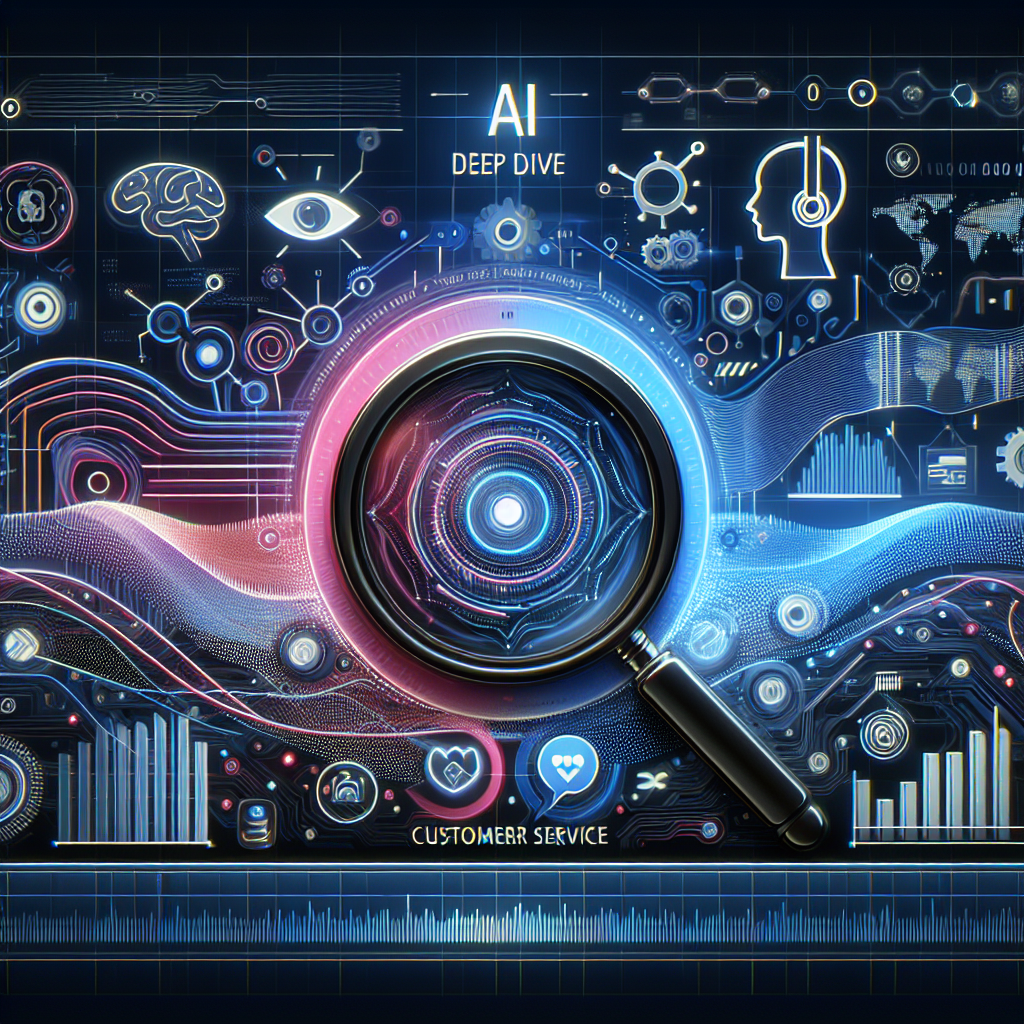In today’s digital age, customer service has become a key differentiator for businesses looking to stand out in a crowded market. With the rise of artificial intelligence (AI) technology, companies now have the ability to leverage predictive analytics to anticipate customer needs, personalize interactions, and ultimately enhance the customer experience.
AI in Predictive Customer Service Analysis and Insights
Predictive customer service analysis involves the use of AI algorithms to analyze data and predict future customer behavior. By leveraging machine learning and data analytics, businesses can gain valuable insights into customer preferences, trends, and patterns, allowing them to anticipate customer needs and personalize interactions in real-time.
One of the key benefits of using AI in predictive customer service analysis is the ability to identify trends and patterns that may not be immediately obvious to human agents. By analyzing vast amounts of data, AI algorithms can uncover hidden correlations and relationships, allowing businesses to proactively address customer issues and deliver personalized solutions.
AI-powered predictive analytics can also help businesses improve the efficiency of their customer service operations. By automating routine tasks and processes, AI can help customer service agents focus on more complex and high-value interactions, ultimately leading to faster response times and higher customer satisfaction.
Furthermore, AI can help businesses optimize their customer service strategies by providing real-time insights into customer sentiment and behavior. By analyzing customer interactions across multiple channels, businesses can identify potential issues and opportunities, allowing them to make data-driven decisions that drive customer loyalty and retention.
FAQs
Q: How does AI-powered predictive analytics work in customer service?
A: AI-powered predictive analytics works by analyzing vast amounts of customer data to identify trends, patterns, and correlations that may not be immediately obvious to human agents. By leveraging machine learning algorithms, businesses can predict future customer behavior and personalize interactions in real-time.
Q: What are the benefits of using AI in predictive customer service analysis?
A: Some of the key benefits of using AI in predictive customer service analysis include the ability to anticipate customer needs, personalize interactions, improve efficiency, and optimize customer service strategies. By leveraging AI technology, businesses can gain valuable insights into customer behavior and preferences, ultimately leading to higher customer satisfaction and loyalty.
Q: How can businesses implement AI-powered predictive analytics in their customer service operations?
A: Businesses can implement AI-powered predictive analytics in their customer service operations by first collecting and analyzing customer data from various sources, such as CRM systems, social media platforms, and customer feedback channels. By leveraging AI algorithms and machine learning techniques, businesses can gain valuable insights into customer behavior and preferences, allowing them to personalize interactions and improve the overall customer experience.
Q: What are some examples of AI-powered predictive customer service analysis in action?
A: Some examples of AI-powered predictive customer service analysis in action include personalized product recommendations, proactive customer support, and sentiment analysis. By leveraging AI technology, businesses can anticipate customer needs, address potential issues before they arise, and deliver personalized solutions that drive customer loyalty and retention.
In conclusion, AI-powered predictive customer service analysis and insights have the potential to revolutionize the way businesses interact with their customers. By leveraging AI technology, businesses can gain valuable insights into customer behavior and preferences, ultimately leading to higher customer satisfaction and loyalty. As AI continues to evolve, businesses that embrace predictive analytics will have a competitive advantage in today’s fast-paced digital marketplace.

